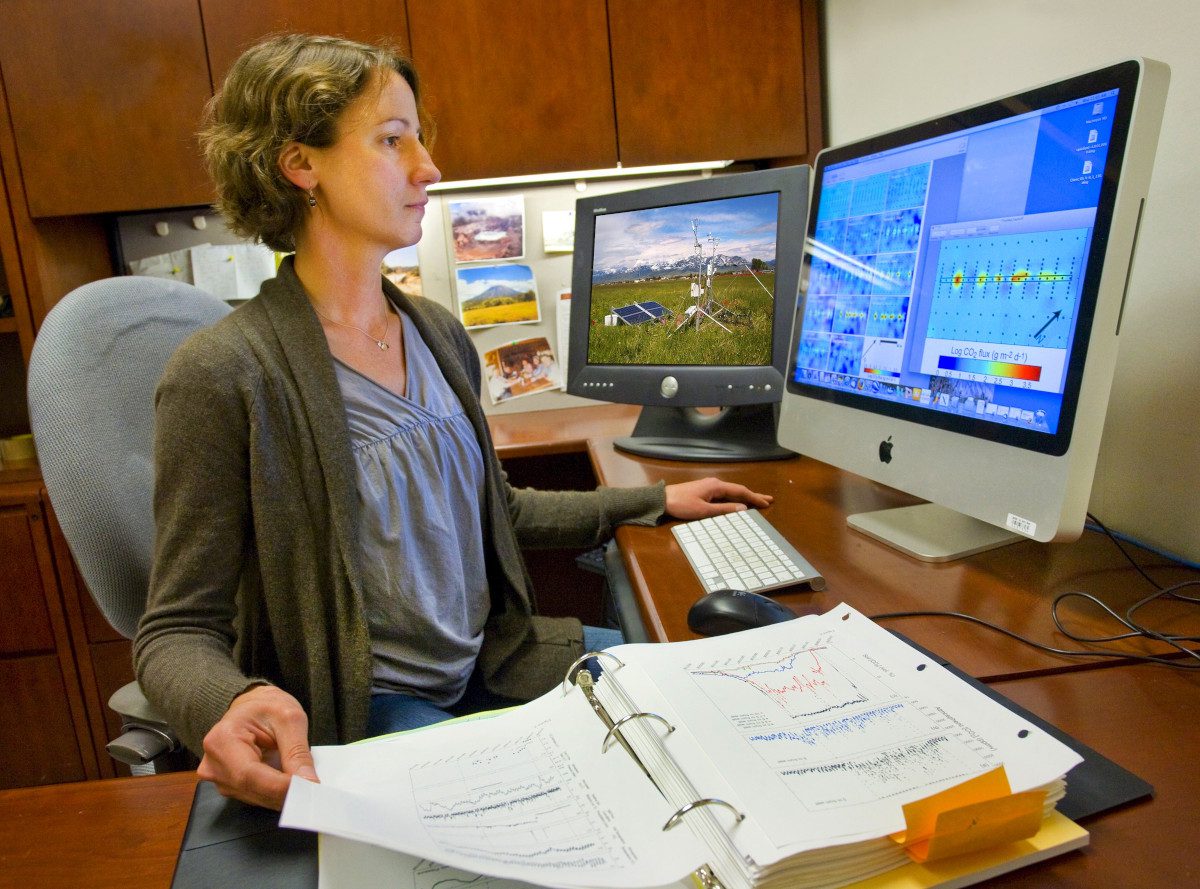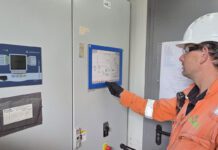
How big a challenge is presented by the task of removing CO2 from the atmosphere in accordance with climate targets? How far have we progressed to date? And what kinds of skills will meeting this challenge require? This article offers a few thoughts from Dr Richard George, Chief Data Scientist at Faethm AI, a software-as-a-service analytics firm with a focus on technology and skills.
Carbon capture is becoming big business. We all know why. But it’s important we dive into the figures to assess the scale of the challenge.
First things first, there’s CO2 levels. Recent figures indicate that we are at 419 parts per million CO2 – a figure that’s 0.4% up from last year, even in the context of reduced economic output from the recent pandemic. You have to go back a long way to the last time we reached these levels on Earth; 2.6 million years in fact, when humans didn’t even exist yet.
Us human beings have been around for a ‘mere’ 300,000 years, but for most of that time, average CO2 levels have stood at about 280ppm. It’s only in the last 200 years, since the invention of machines that pump out greenhouse gas emissions, that this figure has started escalating rapidly, and caused global temperatures to rise. These emissions will continue to increase too, further contributing to temperature change. In turn, escalating temperatures will lead to severe weather and rising sea levels that will be irreversible for hundreds of years.
So what is the energy sector doing to address this? Despite further investment in renewable energy, fossil fuel usage is still increasing, and it’s expected that fossil fuels will remain the dominant form of energy by the end of this century. If humanity wishes to see the next century, this has to change urgently, and we simply have to reduce the CO2 in our atmosphere.
Climate change strategy is the proposed solution, and almost every model suggests that we sequester gigatons of CO2 from the atmosphere. But even if we manage to reduce emissions, we will still be required to remove 100-200 Gigatons of CO2 in the next 30 years. Carbon capture will have to accelerate rapidly, then, if we are to avoid a catastrophe induced by climate change.
As of yet, most firms have done little to address this need, but this is likely to change as higher penalties are introduced. The Bank of England, for example, recently warned businesses to start bracing themselves for substantial price increases of carbon as the world looks to eliminate greenhouse gas pollution. The search for new carbon capture technologies to offset emissions is on, and set to create a new industry labelled ‘Carbon Capture and Sequestration’ (CCS for short) that will drive a climate-economy jobs growth.
CCS and the rise of the engineer
A number of engineering approaches to CCS are gaining investment as global leaders look to achieve net-zero emissions. In January, Elon Musk announced a $100m prize for the best technology for capturing carbon, and firms such as Carbon Engineering are working on building direct air capture (DAC) facilities (i.e. not co-located to sites of emission) to capture 1M tons of carbon a year, equivalent to 40 million trees.
The scale of the challenge ahead remains vast, however. It is estimated that more than 2000 CCS operating facilities will be needed by 2040, but today there are only 21 globally, although 16 projects are currently in advanced stages of planning – mainly in the US and Europe. They’re also backed by $26bn of investment, which will advance technology innovation and directly generate hundreds jobs across construction, engineering, technology and R&D. Several hundred people are employed in the construction of a typical CCS project alone, for example, and many are also involved in its operations.
Clearly these jobs will require specific and fairly advanced engineering and technical skills, many of which are hard to find in today’s employment market. With demand for engineering talent shifting away from things like fossil fuel exploration and moving toward CCS, we must address skills shortages in the industry now if the aforementioned projects are to succeed in deploying emerging carbon capture technologies effectively. Developing a rich pool of talent to choose from isn’t easy, but the best way to start is to focus on retraining and reskilling workers from adjacent fields with transferable skills. This needs to happen quickly, too if they’re to meet demand; our recent joint report with BCG looking at the future of jobs for example revealed that in the US alone, the deficit in supply of engineering workers is set to rise sharply, from 60,000 in 2020 to 1.3 million by 2030.
Solving this challenge isn’t just a case of developing new skills though. It will demand strategic workforce planning to ensure the industry has perpetual access to talent, even as technologies continue to develop and skills cycles continue to accelerate. The increased use of analytics has a big role to play, as it can help leaders proactively identify which engineering roles are most at risk of being automated or phased out due to changing demands, and invest in targeted reskilling processes that help employees likely to be affected to develop new the skills required to fill new, in-demand roles. Doing so will ensure they have access to employees with the right skills to implement carbon capture technologies in the short term, and that employees move through ‘job corridors’ from expendable to indispensable roles as these nascent technologies continue to develop.
Back to nature
Humans’ capabilities only go so far, however, and we’ll have to rely equally on the wonderful attributes of nature to succeed in our carbon goals. Trees exhibit one of the most important attributes of all, in that they are one of the greatest natural sequesters of CO2. Currently there are approximately 3 trillion of them on the planet, but it is estimated that we lose over 15 billion trees per year to deforestation. Even more shockingly, it’s estimated that globally we have halved the number of trees since the beginning of human civilisation.
That’s a scary figure in the context of the climate crisis. Projects such as the TrillionTree Campaign have planted over 14 billion trees over the last 15 years to help combat this decline, but the reality is that we cannot sustain the current rate of destruction. It is likely therefore that governments will need to continue investing and driving jobs growth in reforestation programs to help reduce this gap, principally by retraining those who have been contributing to this problem, including tree loggers, so they can pivot into roles which help ameliorate it foresters. This is an urgent need, because right now there is not enough land to plant the trees needed to capture the current carbon emissions in the atmosphere.
Turning to marine-base plant life, Kelp (seaweed) are considered the trees of the ocean, because they draw CO2 from the water in the same way trees take up CO2 from air. In fact, they draw in so much CO2 that they de-acidify the local water and replenish marine habitat. That makes them absolutely critical in the fight against carbon emissions, because right now increasing atmospheric carbon is causing acidification of the ocean, and having serious consequences for marine life.
Producing large volumes of seaweed for human food, animal feed and biofuels will be not only good for the environment but also good for the livelihoods of millions of workers. Farming 500 million tons of seaweed would not only absorb 135 million tons of carbon, but also directly generate 50 million jobs in kelp farming across the coasts of developing countries, and 100 million more in secondary employment. Producing large volumes of kelp for food and biofuels could also transform local economies in developing countries, while replenishing marine life and helping the climate, making kelp cultivation an extremely exciting growth industry. Seaweed production globally has been increasing 9% per annum in fact, and governments could incentivise further growth through subsidies and direct inclusion into carbon-offsets.
The race for our planet is on
The growing impact that industry has on the planet will drive us to invent new technologies to mitigate further climate change from greenhouse gas emissions. Holding global average temperatures to 1.5 degrees Celsius above the pre-industrial baseline – one of our key climate goals – will require a massive human effort over the next decade. These endeavours will create a new climate-driven economy and many job prospects, but we need to ensure we have personnel that is equipped to fill these roles, and implement technologies that will greatly reduce the impact of climate change on our planet. That means reskilling workers now so we can meet the environmental goals of the present, and deliver a greener future.






